
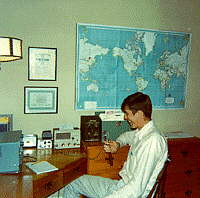 |
Lance was first licensed as WN3GPL, shown here making
his first QSO at age 14 (September 21, 1966) from a
hilltop outside of Lancaster, PA. Since that initial
contact (made on 2m AM using 5 watts from a Heathkit
Twoer transceiver and a 3 element beam mounted
on the chimney), his primary interest has been VHF DXing
and building equipment. Within a year, he upgraded
and was assigned the callsign licenses of WA3GPL (for PA)
and WA1JXN (first operating from NH, and then later from
VT and MT). In the mid 1970's, he was
asssigned WB7CCI during his first move to Montana, but
never got on the air with that callsign. In 1996, he
finally got tired of signing "WA1JXN/7" on CW during EME
contests, and obtained the "vanity callsign" of
W7GJ. W7GJ was originally held by Arthur F.
Bertuleit in Portland, OR up until the 1960's. |
| During the early 1980's, WA1JXN/C6A was operational on 144 MHz 4 times from Treasure Cay, in the Bahama Islands. The station used 4x KLM yagis (16 LBX and 18 LBX), erected on the beach overlooking the ocean to the north. Here, Lance and his dad, Dick, are shown installing the array (which was broken down for storage in between visits). In addition to working over 120 different stations via EME, 48 states were contacted. |
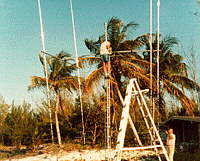 |
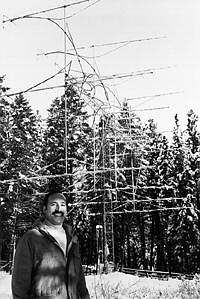 |
In early December 1983, operating from Montana as WA1JXN, Lance was the first radio amateur to communicate with the Space Shuttle. Astronaut Dr. Owen Garriot, W5LFL, was contacted using this 2m EME array of 12 yagis as STS-9 passed down along the West Coast of the USA. Shortly thereafter, inspired by a Central States VHF Conference hospitality room brainstorming session over rum drinks with Don Falle, VE2DFO, the antenna was rebuilt into the current 16 yagi array. |
|
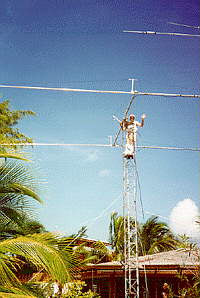 |
|
 I I |
In 1996, I
upgraded to Extra Class to be able to shorten my
callsign. I aquired the callsign of W7GJ,
which had not been active for about 30 years. Art
Bertuleit in Portland had been the original holder of
the call. His QSL card is shown at the left.
Originally, I opted for this callsign because it came across very well on 2m EME CW. However, in recent years, I have switched to digital modes for EME, so that no longer matters. However, it IS still nice to use the "Grape Juice" phonetic on SSB duirng Es openings! |
 |
In February, 2000, a vacation was combined with a mini
DXpedition on 6m to FK92GL on the island of Carriacou in
Grenada. The QTH for J3/W7GJ was at the top of a
canyon among banana trees, overlooking the islands of
Petite Martinique and Petite St. Vincent. The
cottage was the "Belair Gardens Guest Cottage",
belonging to Michael, J37LD, and his wife, Becca.
Because of the location, it always enjoys a nice breeze,
it was very comfortable, and there were no insects :-)
The cottage has both 110 and 230 VAC and is available for very reasonable rent (hams are especially welcome). Late afternoon connections are available from Barbados to Carriacou via small Trans Island Air, which makes it particularly convenient to fly from Europe or Eastern USA locations as long as you do not have very much luggage. |
| The top of the hill behind the cottage (a couple hundred feet higher, and only a few minutes' walk from the cottage) affords a clear shot in all directions. The flat mountain-top site has a couple small meadows with a transmitter building housing a 1 kw FM broadcast XMTR (with extra room for ham equipment) that can be used for mountain topping and/or contesting. Although HF wire antennas are easily strung up around the cottage, large arrays (such as for EME) would best be set up at the hilltop location. |  |
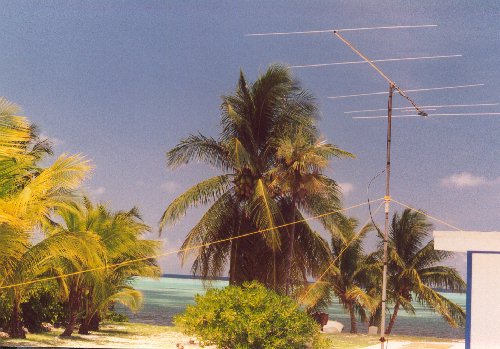 |
In June of 2002, ZF2OC/ZF8 was put on 6m
from Suzy's Cottage (in Little Cayman Island, EK99).
The M Squared 6M5X yagi shown was provided through the
courtesy of W7ALW. 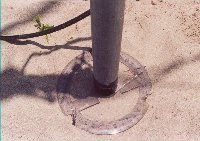 Very reliable power (120 VAC, 60 Hz)
is available now on Little Cayman. After using this
fine little antenna, I am confident that an array of four
of these small, lightweight yagis could be used quite well
to work 6m EME with the new JT44 mode. Shown
at right is the simple azimuth indicator system made from
some paper clips and a protractor. Very reliable power (120 VAC, 60 Hz)
is available now on Little Cayman. After using this
fine little antenna, I am confident that an array of four
of these small, lightweight yagis could be used quite well
to work 6m EME with the new JT44 mode. Shown
at right is the simple azimuth indicator system made from
some paper clips and a protractor. |

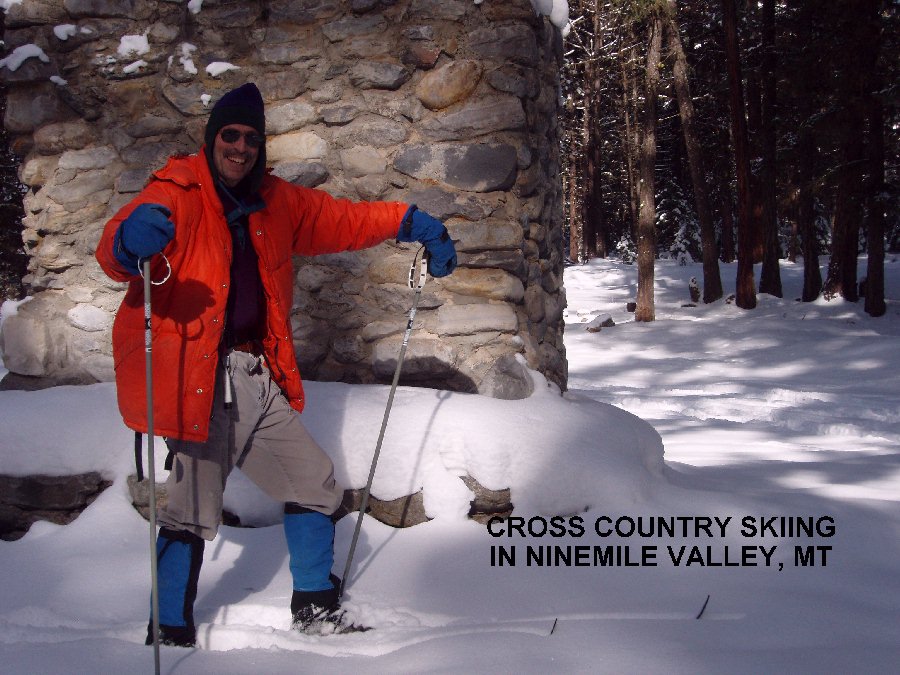
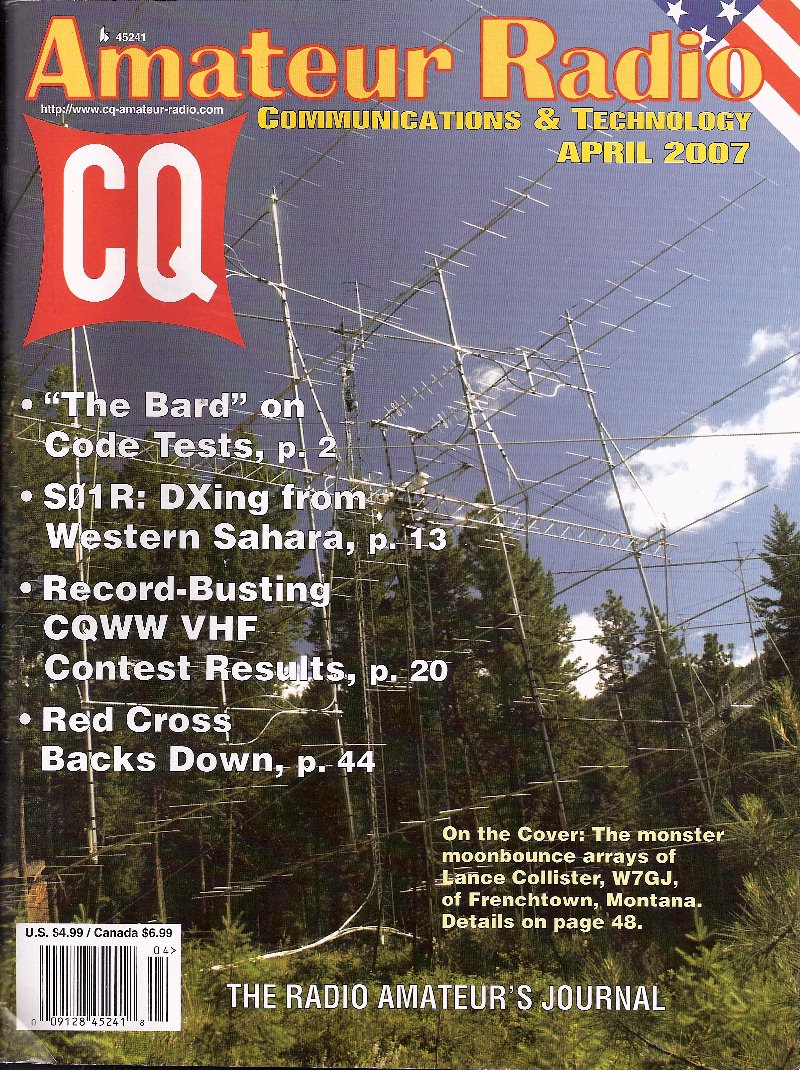
| In 2009, W7GJ
went on his first 6m EME DXpedition. He had been
gathering up equipment suitable for doing a world class
6m operation from some rare DXCC, and by March of 2009,
he took a K3 with PR6 preamp, 50' of LMR 600UF, a 6M8GJ
yagi, a homemade manual elevation mount, and a solid
state amplifier to Rarotonga. Victor E51CG was
kind enough to loan a 20' section of tower to use as a
mast, and a special bracket was brought along to allow
the antenna to be mounted easily on the tower, yet
rotated. Most of the contacts were made while the
antenna was elevated. The result was 26 different
stations worked via 6m EME - the most stations that had
been worked on a 6m EME DXpedition up to that
point. Complete details of the trip are available
at http://www.bigskyspaces.com/w7gj/E51SIX.pdf |
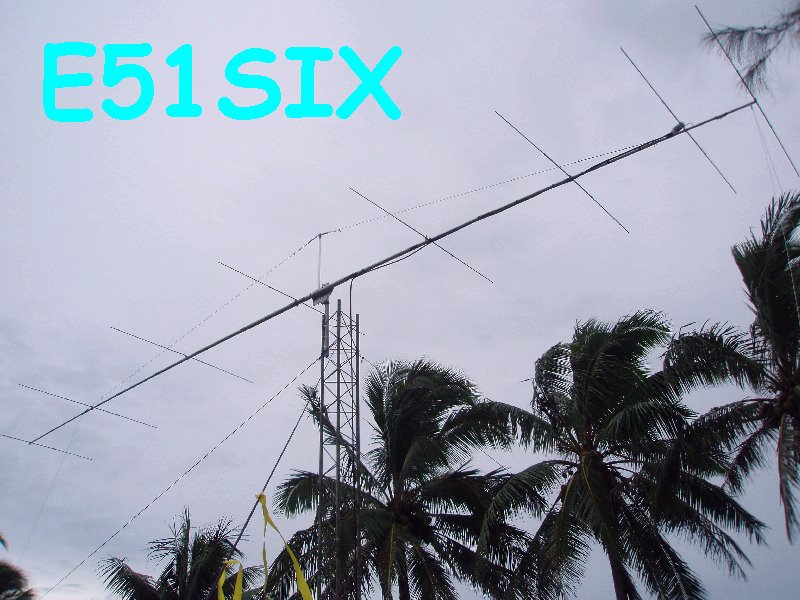 |
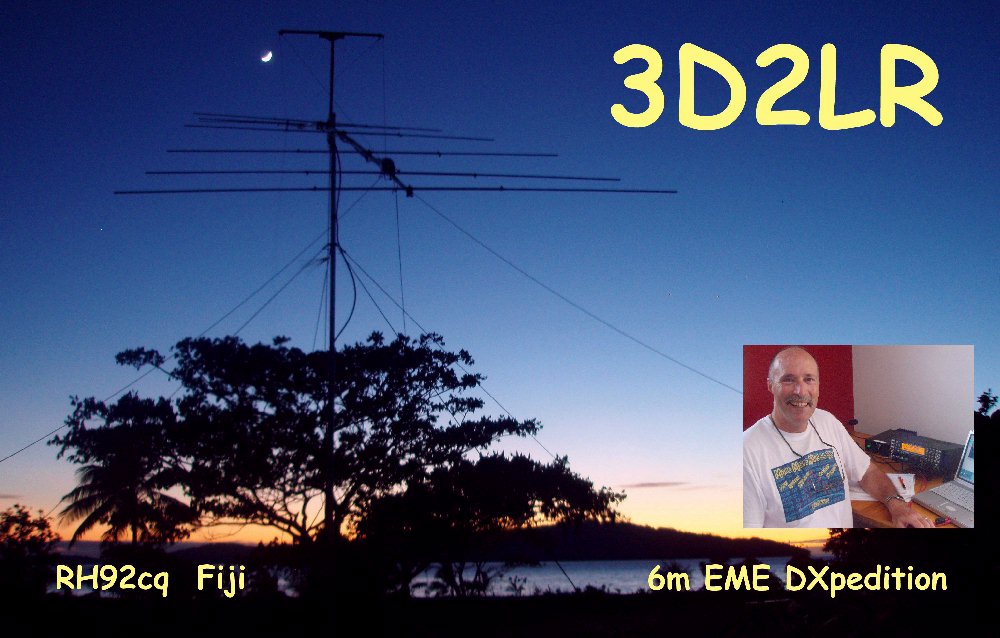 |
In the fall of 2010, he
activated another rare country ono 6m EME, this time
traveling to Fiji. The equipment was similar to
the the Raratonga trip, except this time he also took
his own 20' portable mast. The results were even
better than before - twice as many stations contacted
(52) via 6m EME and 17 additional stations copied.
Complete details are available at http://www.bigskyspaces.com/w7gj/Fiji2010.htm |
| In 2011, the first 6m EME contacts were
made from Samoa as 5W0GJ. |
|
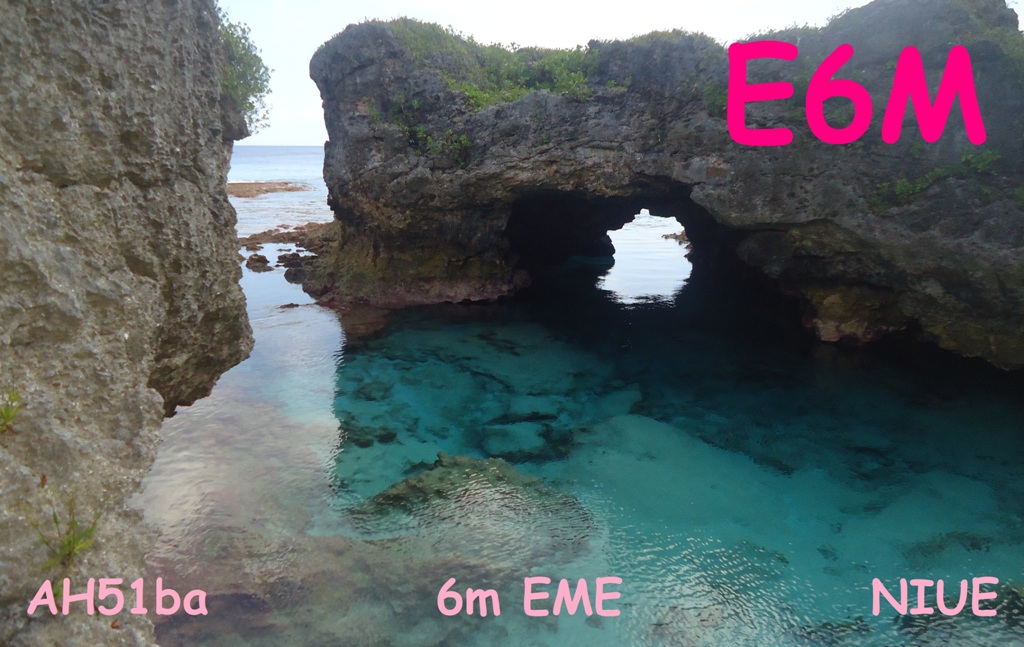 |
In 2012, the first 6m EME
contacts were made from Niue. In fact, E6M was the first license issued under the change from the old ZK2 prefix to the new E6 prefix! |
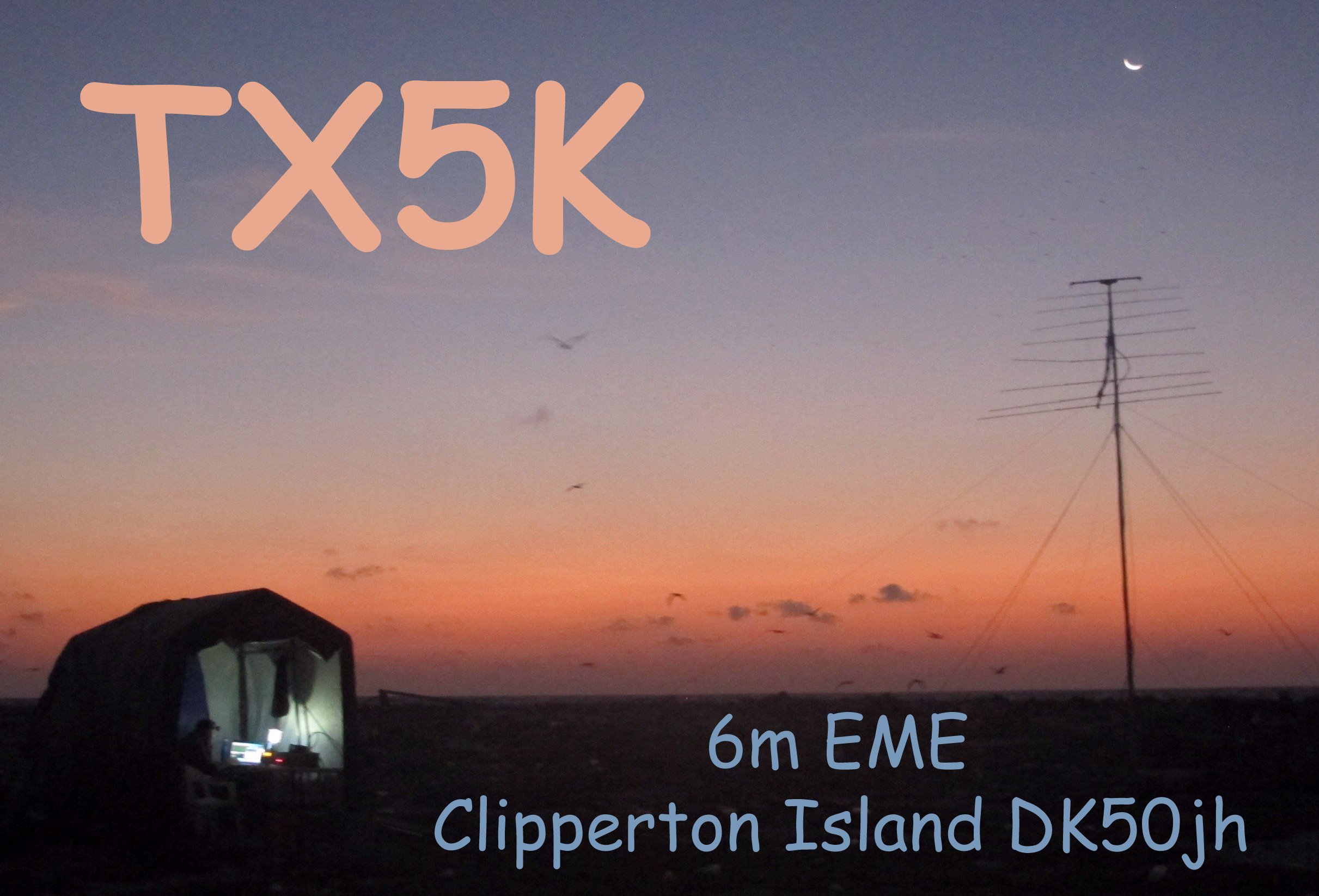 |
In 2013, the first 6m EME contacts were
made from Clipperton Island. In fact, the first contacts made during that DXpedition were on 6m EME! |
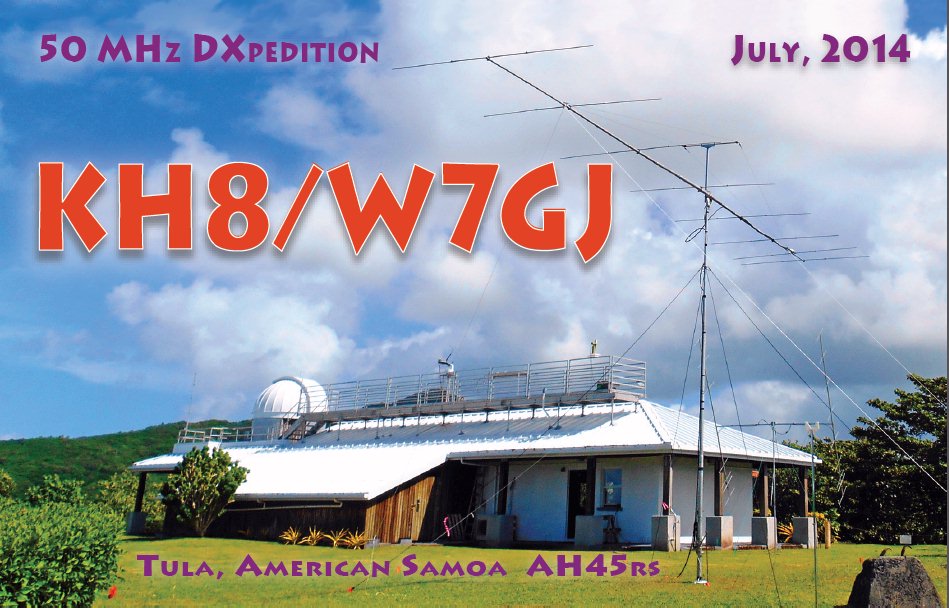 |
In 2014, the first 6m EME contacts were
made from American Samoa. |
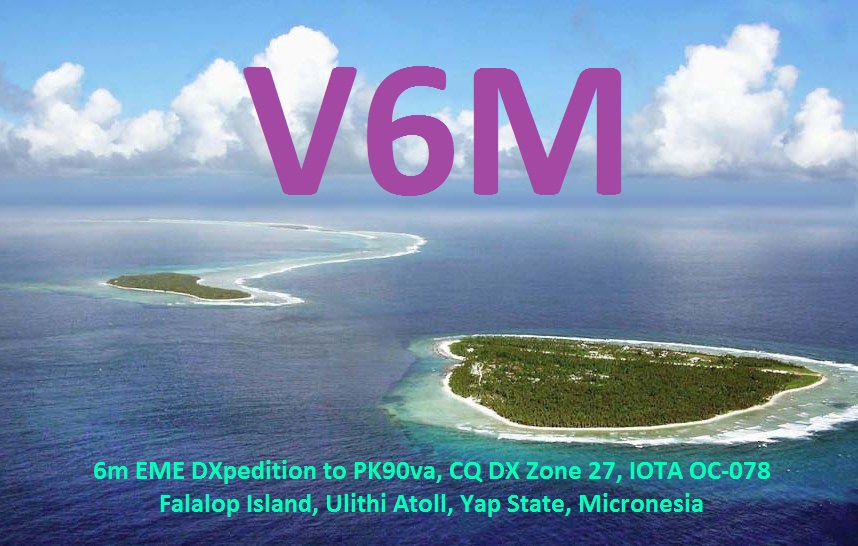 |
In 2015, Falalop Island in Yap State was
the location chosen to do the first 6m EME operation from the Federated States of Micronesia. |
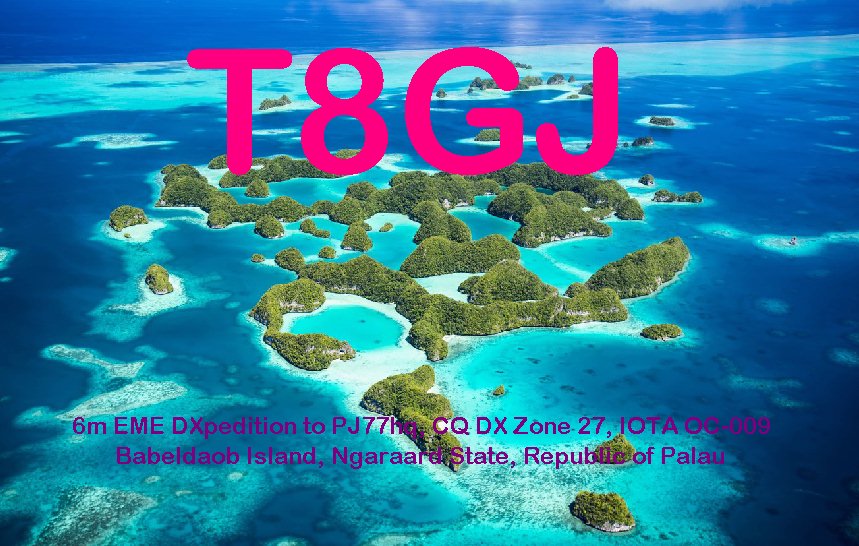 |
In 2016, the first 6m EME contacts were
made from the Republic of Palau. |